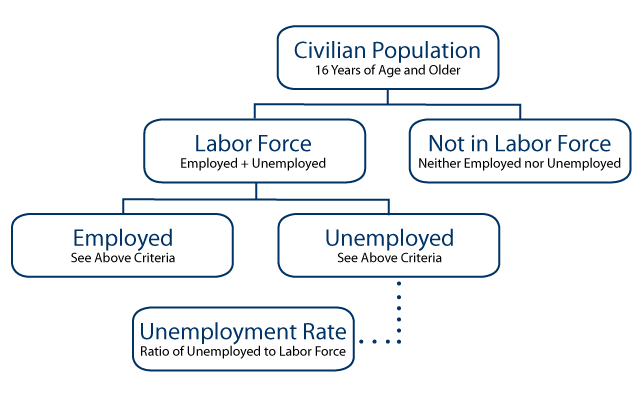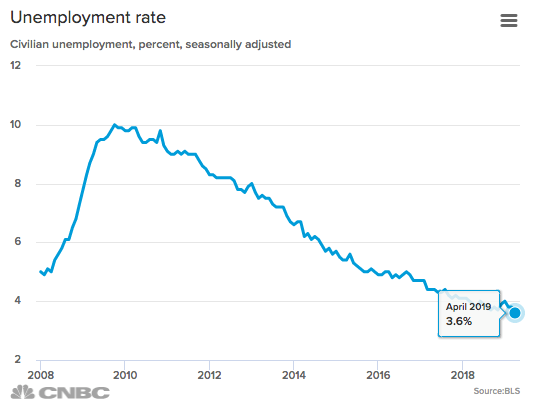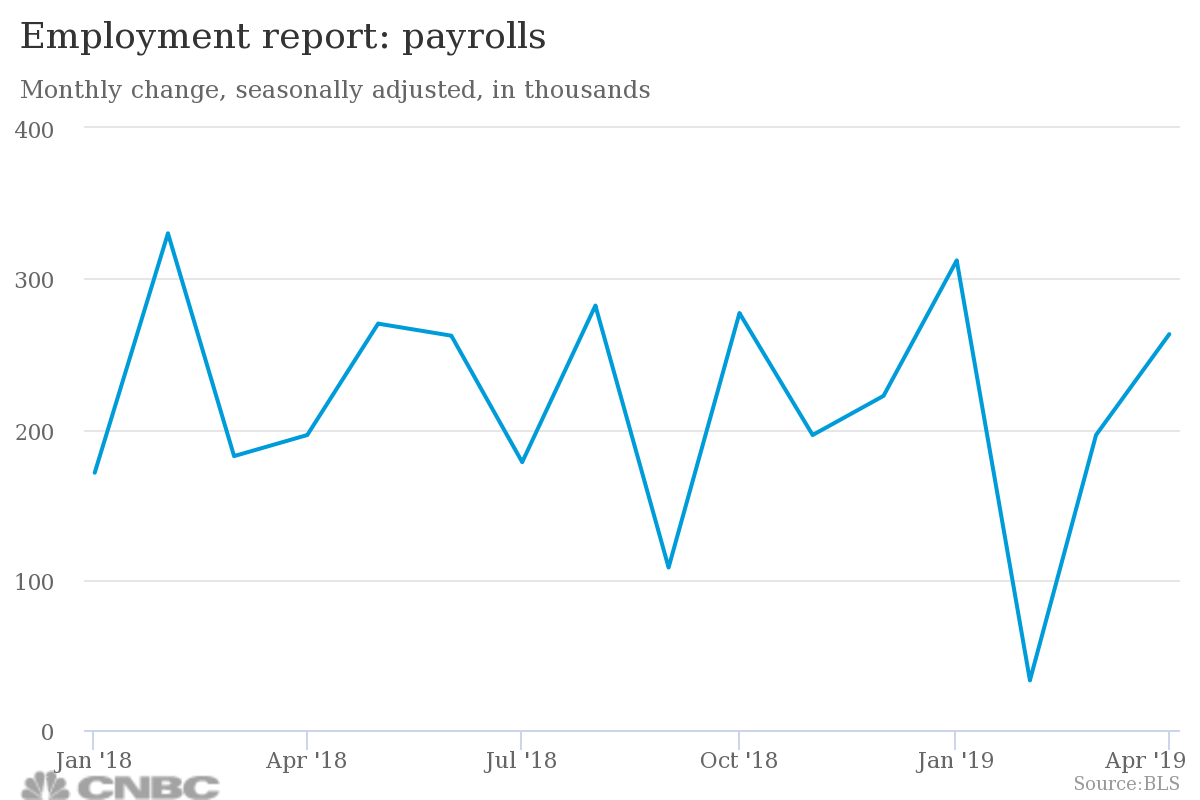Nonfarm payroll growth easily beat Wall Street expectations of 190,000 and a 3.8% jobless rate.
Average hourly earnings growth held at 3.2% over the past year, a notch below Dow Jones estimates of 3.3%. The monthly gain was 0.2%, below the expected 0.3% increase, bringing the average to $27.77. The average work week also dropped 0.1 hours to 34.4 hours.
Unemployment was last this low in December 1969 when it hit 3.5%. At a time when many economists see a tight labor market, big job growth continues as the economic expansion is just a few months away from being the longest in history.
The unemployment rate for Asians fell sharply, plunging from 3.1% to 2.2%.
While last month's slump in the jobless rate came with strong increase in hiring, it also was helped along by a sharp decline in the labor force of 490,000. That brought the labor force participation rate down to 62.8%, exactly where it was a year ago.
A broader unemployment gauge that includes those who have quit looking for jobs as well as the underemployed held at 7.3%, where it has been since February.
Those counted as not in the labor force surged by 646,000 to a fresh high of 96.2 million.
Comment: Nearly one third of US population is not in the Labor force. While 646,000 move out of labor force only 263,000 gets the jobs, but the unemployment rate goes down. How do we explain the numbers? Here is a year old video that explains how this "propaganda" works.
The level of unemployed people plunged by 387,000 in April, bringing the total level to 5.8 million. However, the ranks of the employed also declined by 103,000, according to the Labor Department's household survey.
Professional and business services led job creation with 76,000 new positions. Construction added 33,000, bringing to 256,000 the total new jobs created in the field over the past year.
Health care rose by 27,000, bringing its 12-month total to 404,000, while financial positions increased by 12,000, rounding out an increase of 111,000 in the 12-month period thanks largely to growth in real estate and rental and leasing.
Social assistance increased by 26,000, while manufacturing added 4,000.
Retail, whose fortunes have fluctuated in recent months, saw a loss of 12,000 jobs.
Previous months saw net upward revisions, with February going from a scant 33,000 growth to 56,000, though March's total was reduced to 189,000 from 196,000, for a net gain of 16,000. Year to date, job gains have averaged 205,000 a month.
GDP increased 3.2% during the first quarter, far exceeding expectations, while productivity during the quarter jumped 3.6% for its best gain in five years. Pending home sales rose 3.8% in March, providing some hope in the real estate market so long as rates are held in check.
Earlier this week, the Federal Reserve held the line on its benchmark interest rate, characterizing economic growth as solid even as inflation remains tame. The central bank watches metrics like the nonfarm payrolls report closely for clues both on job creation and wage pressures.
Fed Chairman Jerome Powell said current indications point to a prolonged period of holding pat on increases or decreases in rates. President Donald Trump has said he wants the Fed to cut rates by a full percentage point.






Comment: If the US economy is doing so great, why are so many workers miserable?